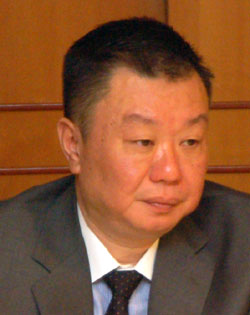
C&G: Waste-to-energy business generates 9M10 revenues of Rmb 978.6 million
Leading PRC waste-to-energy player C&G generated revenues of Rmb 978.6 million for the first 9 months of FY2010, contributed by its environmental business acquired this Feb.
The acquisition included 7 build-operate-transfer (BOT) waste-to-energy projects in Jinjiang, Huangshi, Hui’an, Anxi, Fuqing, Langfang and Yingkou in China.
The Jinjiang plant has started commercial operation with a daily waste treatment capacity of 1,800 tons.
Another 3 BOT projects in Nanping, Jianyang and Xiaogan were clinched during the second quarter.
Gross profits were Rmb 78.2 million, of which 69.2% came from construction revenues from the BOT projects while 30.8% was from electricity generation.
Group gross margins were 8.0%.
There was a net gain of Rmb 131.6 million from revaluing its newly acquired waste-to-energy business, offset by Rmb 41.2 million of losses from disposing its textile business in Aug.
Net profit attributable to shareholders was Rmb 121.1 million, translating to net margins of 12.4%.
The management expects three of its waste-to-energy projects (Huangshi, Huian and Anxi) to be completed by year-end.
Upon the completion, C&G’s waste treatment capacity will be doubled to 3,600 tons per day, translating to as much as 1.2 million tons per annum.
Related story: C&G: Lively Q&A At Investor Meeting

Guangzhao to sell its forestry assets
Guangzhao Industrial Forest Biotechnology is selling its 15,000 hectares of forestry assets valued at about Rmb 560 million.
The deal will strengthen its financials, and put it in a ready position to kick-start new businesses (such as organic agricultural products), said chairman Mdm Susan Su in a press statement.
A letter of intent has been inked with GreenWood Resources, a US-based tree farm developer, to sell its land use rights and timber ownership of its forestry assets in China over 2 to 3 years.
The first transaction will take place in 6 months’ time, and the remaining sale will proceed in stages over the next 2 to 3 years.
Related story: LORENZO, GUANGZHAO Surge As Punters Follow Smart Money
Transcu bio-fuel venture gets S$790,000 funding boost from Japanese authorities
Transcu has been chalking up losses for the past one to two years, but will its recent foray into bio-fuels be the break it needs?
The latest project announced by its 60%-owned joint venture with Nanomizer Pte Ltd is to develop technology that processes crude palm oil for direct use in internal combustion engines.
Bio-diesel from palm oil produced by the conventional esterification process requires the use of expensive methanol and the removal of glycerin.
In comparison, Nanomizer’s technology for degummed (removal of impurities, in particular phosphorous) and emulsified palm oil requires less energy and other feedstock for similar calorific value.

Furthermore, Nanomizer’s technology allows processing to be carried out on-site, unlike esterification, which needs to be carried out in a specialized processing plant.
Japanese quasi-government research body NEDO recently agreed to fund the project’s R&D expenses of up to 50 million yen (S$790,000) over a period of one year ending in the third quarter of 2011.
And Transcu’s 100%-owned unit, Transcu Green Fuel Pte Ltd, will have exclusive global rights to promote, market, distribute and sell related products developed by Nanomizer.
Transcu also has an option to purchase up to 10% in Nanomizer.
Yesterday, the SGX-listed life science group posted revenues that surged 44.7% to US$2.9 million for the second quarter of its financial year ending Mar 2011, thanks to better contribution from its cosmetic business, the result of branding and advertising efforts. Its retail distribution network grew 85% to 370 outlets over the same period.
Transcu’s cosmetic business consists of two skincare lines, Electore (for women) and giulianoFujiwara Electore (for men). Using mineral-ore as the key ingredient, the products contain an abundance of natural minerals and ions that promote the natural balance of the skin.
In Sep, it introduced an anti-wrinkle serum that uses a proprietary Ionic Passive technology for better efficacy, the first of a new product range.
Its 2Q11 net loss was narrowed to US$2.5 million.






